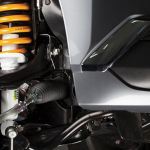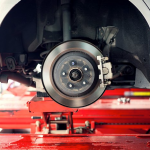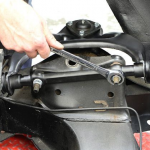Common Mistakes New Drivers Make and How to Avoid Them
Driving is a skill that takes practice and experience to master. New drivers are prone to making mistakes as they navigate the world of road rules, traffic conditions, and vehicle handling. By identifying and understanding these common mistakes, they can take steps to avoid them and become safer, more confident drivers.

This article outlines some of the new drivers’ most common mistakes and offers practical advice on avoiding them from the best instructors of driving schools in Logan QLD.
Speeding
One of the most common mistakes new drivers make is speeding. They may need to be made aware of the posted speed limits, or they might underestimate the risks associated with driving too fast. Speeding increases the likelihood of accidents and reduces reaction time.
How to avoid it: Always pay attention to posted speed limit signs and adjust your speed accordingly. If you’re unsure of the speed limit, err on the side of caution and drive at a slower, safer speed. Keep safe from other vehicles, and always allow extra time to reach your destination.
Tailgating
Following too closely behind another vehicle, also known as tailgating, is another common mistake among new drivers. It can lead to rear-end collisions and prevent the driver from having enough time to react to sudden stops or changes in traffic.
How to avoid it: Maintain a safe following distance from the vehicle in front of you. The general rule of thumb is to stay at least one car long behind for every ten mph you travel. In adverse weather conditions or heavy traffic, increase this distance for greater reaction time.
Failing to Signal
New drivers must often remember to use their turn signals when changing lanes or making turns. This can be confusing and dangerous for other drivers on the road, as they cannot anticipate your movements.
How to avoid it: Make it a habit always to use your turn signals, even when you think no one else is around. Not only will this help keep you safe, but it will also demonstrate courtesy and respect for your fellow drivers.
Not Checking Blind Spots
Failing to check blind spots is another common mistake new drivers make. Blind spots are areas around your vehicle that are not visible in your rearview or side mirrors, making it difficult to see other vehicles or obstacles.
How to avoid it: Before changing lanes or merging, always check your blind spots by turning your head to look over your shoulder. You can also adjust your mirrors to minimize blind spots and make seeing what’s happening around your vehicle easier.
Overconfidence
Some new drivers need to be more confident in their abilities, leading to reckless behaviour and poor decision-making. Overconfidence can result in a higher risk of accidents and other dangerous situations.
How to avoid it:
- Remember that driving is a lifelong learning process.
- Always stay humble and be open to feedback from more experienced drivers.
- Regularly review the rules of the road and practice defensive driving techniques to stay sharp and aware.
Poor Parking
New drivers may need help with parking, especially in tight spaces or when parallel parking. This can lead to accidents or damage to your vehicle and others nearby.
How to avoid it:
- Practice parking in various situations, including parallel parking and backing into spaces.
- Use your mirrors and any available technology, such as rearview cameras or parking sensors, to help guide you.
- If you need more clarification about fitting into a particular space, look for a larger spot or ask someone to help guide you.
Distracted Driving
Using a cell phone, adjusting the radio, eating, or engaging in other activities while driving can be incredibly dangerous. Distracted driving reduces your ability to focus on the road and respond to potential hazards.

How to avoid it: Put away any distractions before you start driving. If you need to make a call or send a text message, pull over to a safe location first. Keep both hands on the wheel and your eyes on the road.
Not Adapting to Road Conditions
New drivers might need to be more familiar with adjusting their driving habits in response to different road conditions, such as wet, icy, or foggy weather. Failing to adapt to these conditions can increase the risk of accidents.
How to avoid it: Educate yourself on how different weather conditions can affect your driving and how to adjust your speed, braking, and following distance accordingly. Always drive slower than the posted speed limit in adverse conditions and increase your following distance. If you’re uncomfortable driving in certain conditions, wait until the weather improves or consider taking an alternate route.
Ignoring Traffic Signs and Signals
New drivers might be prone to missing or ignoring traffic signs and signals due to inexperience or distraction. This can lead to dangerous situations and potential accidents.
How to avoid it: Always pay close attention to traffic signs and signals, and always obey them. If you need clarification on what a particular sign means, take the time to look it up and familiarize yourself with common road signs.
Failing to Yield
New drivers may need guidance on when to yield the right-of-way, leading to confusion and potential accidents at intersections or merging onto highways.
How to avoid it: Familiarize yourself with the rules for yielding and always be prepared to yield when necessary. When approaching an intersection or entering a roadway, look for signs or signals indicating who has the right-of-way and proceed cautiously.
By being aware of these common mistakes and taking the necessary precautions to avoid them, new drivers can significantly improve their driving skills and increase their safety on the road. Remember, practice makes perfect. Continue to hone your skills and stay vigilant, so you can enjoy the freedom and independence of being a skilled, responsible driver.



